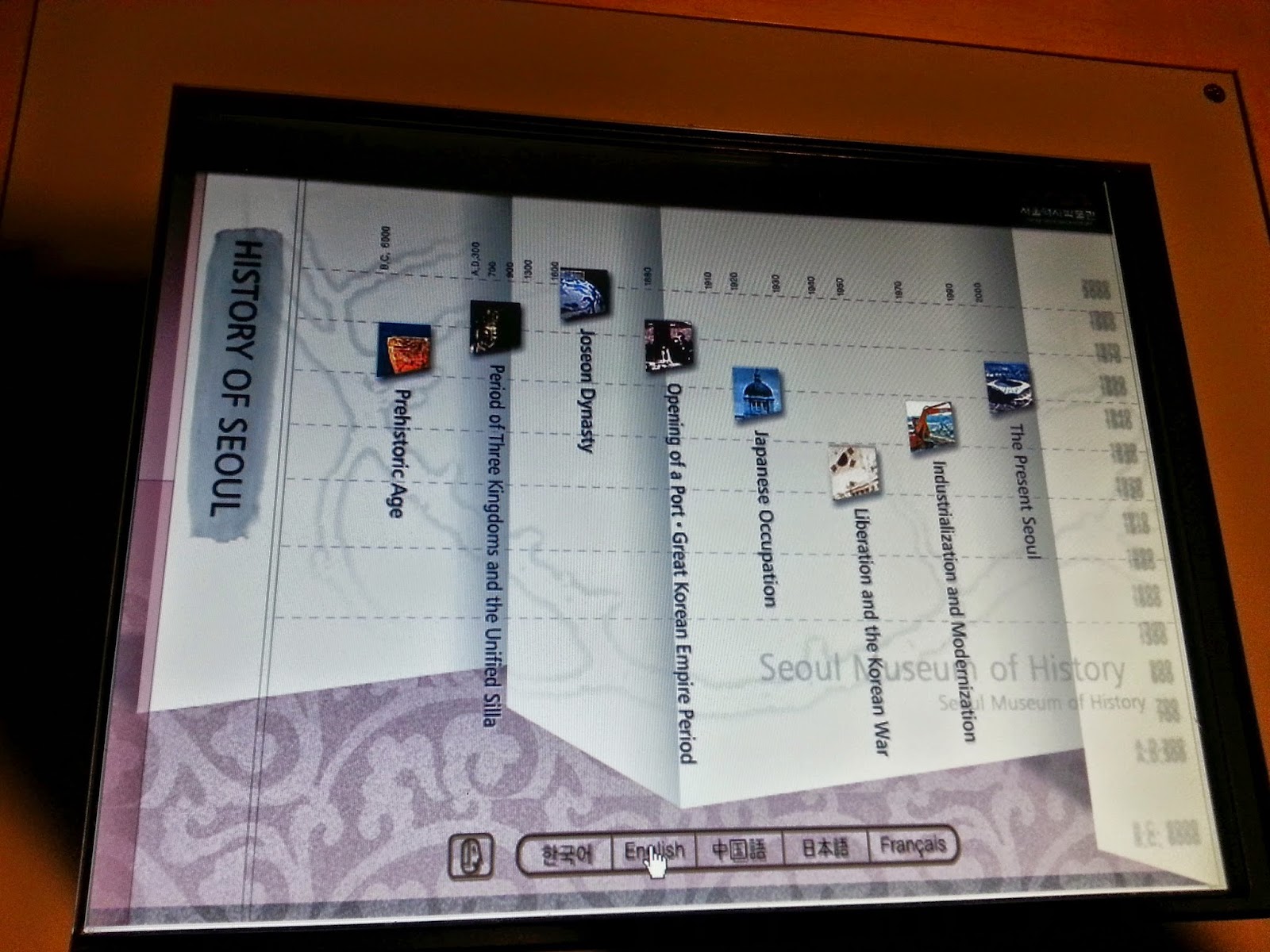Stone Stele from Joseon period, unearthed near Mapo
splash fountain map
The building, as with many others in Seoul, was decked out for the holiday. There was a large Christmas tree out front with the two stone mascots of the museum, Haedori and Haesuni. They represent the haechi, Seoul's mascot, which is an imaginary animal believed to ward off evil spirits, discern good and evil, and give joy to those around him.
Inside, there were some nice decorations, as well!
The lobby has huge stone murals near the information desk and a history library.
We climbed up to the 3rd floor where most of the displays are and found the giant scale model of Seoul. We had fun finding our "house" and visiting all of the landmarks we could recognize.
In the display about the Joseon Dynasty, we found this terracotta map of Seoul and a nongno, which was used to lift stones for building castles.
a portable firearm
There were a number of interactive computer screens throughout the museum - these were fun for us to learn more...and for Michael to push buttons. :)
model of hanok living
On the balcony level pictured above we found more computer activities, relics, and directions for origami projects.
One of my favorite displays was the water clock, with ornate instrument ringers.
In the museum sections of more modern eras, there was a fun display from the 1988 Seoul Olympics.
There were a few fun trick eye exhibits...
Displays of clothing and screens...
...and many pictures of the transitions the city has gone through over the centuries. One of the most striking things to us were all the pictures of the destruction caused by war and the changes seen throughout the city's architecture.
In this next picture from 1926, during the Japanese occupation, #10 is where the Gwanghwamun Square begins today near City Hall and #17 is where the Gyeongbukgung Palace is again now located (after being rebuilt).
There were so many things to see, I couldn't possibly share all of them in pictures, but here are a few more:
traditional wooden shoes to try on
pictures of many of the monuments throughout the city
the gift shop
We stopped by the cafe for a quick snack and had these tasty Vivel Snowballs...they looked perfect and round in the case...
And were given to us like this...for ease of eating?
As we walked back to the subway, I snapped a few photos of the surrounding artwork - a massive, moving sculpture and a set of blue horses pulling a sleigh.
Live in or visiting Seoul? Here's how to find the museum:
55 Saemunan-ro (sinmunno 2-ga), Jonggno-gu, Seoul 110-062, Korea
서울특별시 종로구 새문안로 55 (신문로2가)
Hours:
Closed on Mondays and New Year’s Day
Tuesday-Friday: 9:00 – 20:00 (yearlong)
Weekends and Holidays: 9:00-19:00 (March-Oct); 9:00-18:00 (Nov-Feb)
Free English Audio Guide available at Information Desk, 1st Floor
Free storage lockers on the right before you enter the building.
1) Gwanghwamun Station (Seoul Subway Line 5), Exit 7.
Upon exiting the station, turn around, and turn right at the 4-way Intersection. Go straight about 500m to arrive at the museum on the right.
Go straight about 600m to arrive at the museum on the left.





































No comments:
Post a Comment